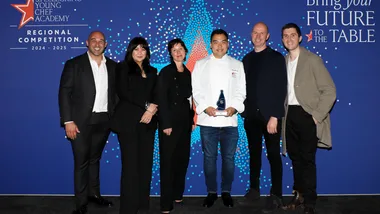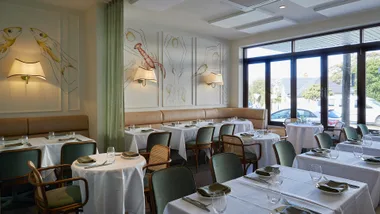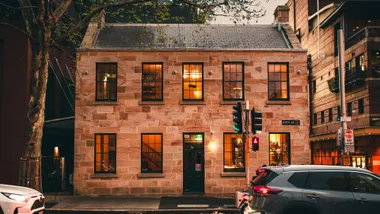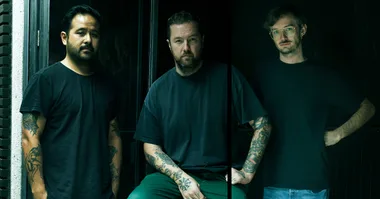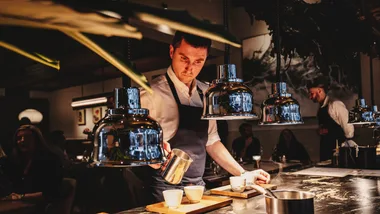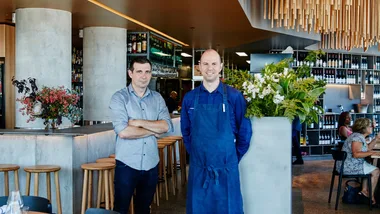Out shooting his TV series Paddock to Plate, Matt Moran visited Paspaley’s farms in Broome to harvest pearl meat – that other precious commodity nestled inside an oyster shell.
The crew and I were on the road filming the second series of Paddock to Plate for about nine weeks. Last year was very focused on Victoria and NSW, and we did it in the middle of winter, so this time we thought we’d mix it up a little bit. We started in South Australia and visited Riverland, Eyre Peninsula, Barossa and the Fleurieu Peninsula. We had a break for three to four weeks, then headed to WA where we went to Southern Forest, Margaret River, up to Perth, Carnarvon and then Broome, in the Kimberley.
In South Australia we went to Port Lincoln and saw the amazing southern bluefin tuna. We went duck-hunting, which was pretty special, visited the cockle farmers in Coorong and went to Maggie Beer’s Barossa Valley farm. In WA, we visited the producers of White Rocks Veal, went fishing off Carnarvon for large pink snapper and caught mud crab in Cape Leveque with an Aboriginal elder – it was the time of my life.
The last time I was in Broome was about two years ago; I think it’s one of the most beautiful, romantic places in the world. You have striking red dirt, amazing white sands and beautiful blue water. The combination of these is insane, plus, of course, it’s warm and the people are just lovely. It’s one of those magical spots in the world.
We visited the Paspaley pearl meat farms, some of which are just off the coast. I know the Paspaley family quite well, and have always been fascinated by pearl meat; it’s unusual and I enjoy its sweetness.
Paddock to Plate is about showcasing producers who are doing something a little different – and the Paspaleys are very passionate about what they do. They harvest something like 80 to 90 per cent of the pearl meat in Australia and have been doing so for generations. They’ve got several pearl farms between Broome and Darwin.
Pearl meat is quite scarce. Around seven tonnes goes overseas every year. The Japanese love it and the Chinese enjoy it dried. It’s a rare thing to see because there’s not a mass market for it and it’s expensive – around $100 a kilo – but it’s unbelievable. It tastes like a cross between a scallop and abalone. I had it on the menu at Aria a few times and I’ve used it catering functions for the Paspaleys. Quay has also used it, as have chefs Tetsuya Wakuda and Shannon Bennett.
You can flash-fry pearl meat or eat it raw, thinly sliced – I made a ceviche out of it on the day.
To harvest the pearls we went for a dive off Eighty Mile Beach to find the wild shell, and from there we went out on one of the Paspaley monster boats and pulled some up from their farms. You’re can’t take wild shells unless you have a licence, so we collected the farmed ones. The process is simple: the pearls (if the shell contains one) are harvested, the shell is cleaned, graded and polished for export, and the meat is removed with a knife.
The guys were kind enough to let me open them and I pulled out the most beautiful pearl. I’ve been on the road so much with this show, I thought it was only fitting that I give it to my daughter.
Matt Moran’s Paddock to Plate premieres in September on The LifeStyle Channel.

